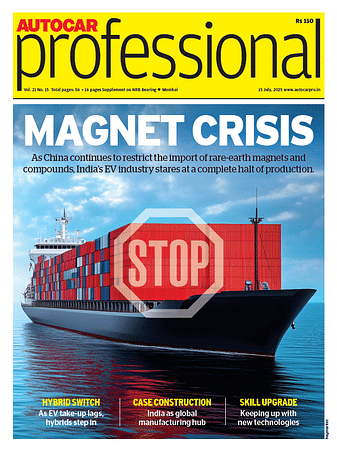Penetration of electric buses set to double next fiscal
A key factor driving the popularity is the favourable total cost of ownership (TCO) when compared to traditional internal combustion engine (ICE) and compressed natural gas (CNG) buses.
The share of electric buses (e-buses) in India's new bus sales is poised to double to 8% in the upcoming fiscal year, up from 4% in the previous fiscal year. This surge is attributed to the government's concerted efforts to decarbonise public transportation and the improving total cost of ownership.
According to Crisil, a rating agency, the deployment of e-buses is being actively pursued through tenders awarded under the Faster Adoption and Manufacturing of Hybrid and Electric Vehicles (FAME) scheme and the National Electric Bus Programme (NEBP). These initiatives form a crucial part of the central government's broader agenda to reduce carbon emissions in the public transport sector.
A key factor driving the popularity of e-buses is their favourable total cost of ownership (TCO) when compared to traditional internal combustion engine (ICE) and compressed natural gas (CNG) buses. This advantage stems from their lower operating costs and decreasing initial acquisition expenses.
Under the FAME and NEBP programmes, which were launched in 2015 and 2022, respectively, state transportation units (STUs) have initiated e-bus procurement using two models: gross cost contract (GCC) and outright purchase. To date, 5,760 e-buses have been delivered, with an additional 10,000 set to be deployed in the current and upcoming fiscal year.
The report highlights the favourable contracting terms offered under the GCC model, including assured rentals, inflation-linked fee revisions, and the absence of traffic risk. These factors have significantly contributed to the successful adoption of e-buses thus far.
Sushant Sarode, Director, CRISIL Ratings, “Growth in e-buses is also supported by favourable ownership economics. TCO for e-buses is estimated to be 15-20% lower than ICE and CNG buses over an estimated life span of 15 years, with breakeven in 6-7 years. Though the initial acquisition cost of an e-bus is twice that of an ICE or CNG bus, it is expected to reduce on account of improving the operational efficiency of original equipment manufacturers (OEMs) with increasing scale and localisation and decreasing battery costs.”
However, a few adoption-related challenges loom, the report continues. The first is a high counterparty risk as the financial flexibility of STUs remains constrained, leading to an elongated debtor cycle that makes lenders wary of financing e-bus projects. The second is inadequate battery charging infrastructure, which is critical in intercity bus operations.
Pallavi Singh, Team Leader, CRISIL Ratings, “The recently announced PM-eBus Sewa Scheme rightly aims to address issues related to payment security mechanism (PSM), including setting up of a payment security fund that will facilitate timely payments to the operators in case of delays by STUs and creating battery charging infrastructure, and should give a fillip to e-bus adoption.”
As per the proposed scheme, the government is working on the modalities of setting up a PSM to facilitate receivables’ security to OEMs in case an STU delays or fails to make timely payments. Adoption of this scheme by state counterparties will be critical to driving up e-bus penetration.
As per Crisil, so far, e-bus sales have been largely driven by government initiatives targeted at the public transport sector. Adoption in private sector remains low. Thus, the development of a policy framework aimed at increasing the participation of the private sector, which accounts for about 90% of the bus fleet in the country, will also be critical to speeding up the penetration of e-buses.
In the road ahead, policy changes, the evolution of battery technology, and the implementation of a payment security mechanism will bear watching, the reports further continue.
RELATED ARTICLES
SIAM Conclave Explores Sustainable Strategies for Automotive Logistics
Stakeholders discuss multimodal transport, digital innovation, and sustainable practices to improve efficiency and resil...
Varroc Appoints Padmanabh Sinha as Independent Director
Sinha returns to Varroc’s Board with over 25 years of investment experience across private equity and technology.
Railways To Introduce More Specialized Wagons For Vehicle Transportation: Hitendra Malhotra
Hitendra Malhotra, a member of the Railway Board for Operations & Business Development at the Ministry of Railways noted...





 By Autocar Professional Bureau
By Autocar Professional Bureau
 18 Dec 2023
18 Dec 2023
 4793 Views
4793 Views





 Sarthak Mahajan
Sarthak Mahajan


 Shruti Shiraguppi
Shruti Shiraguppi

 Kiran Murali
Kiran Murali

